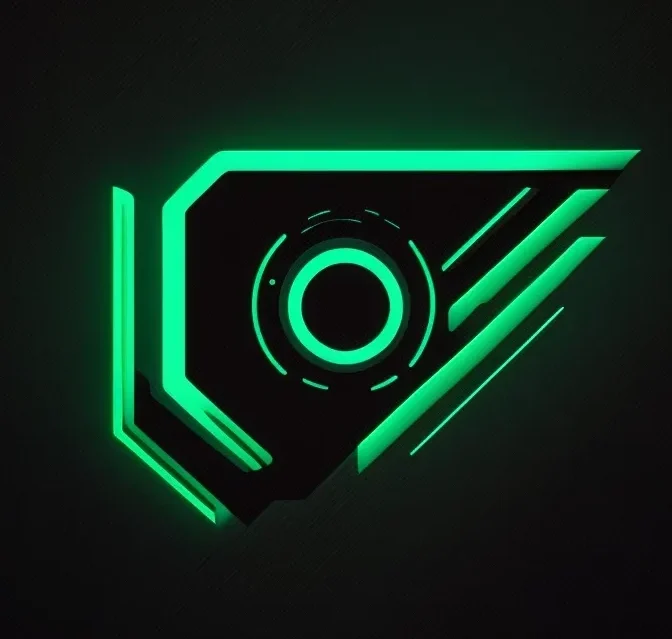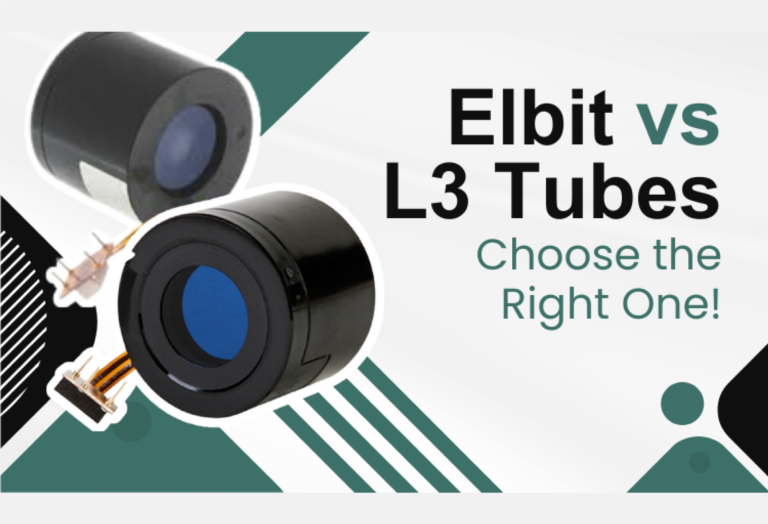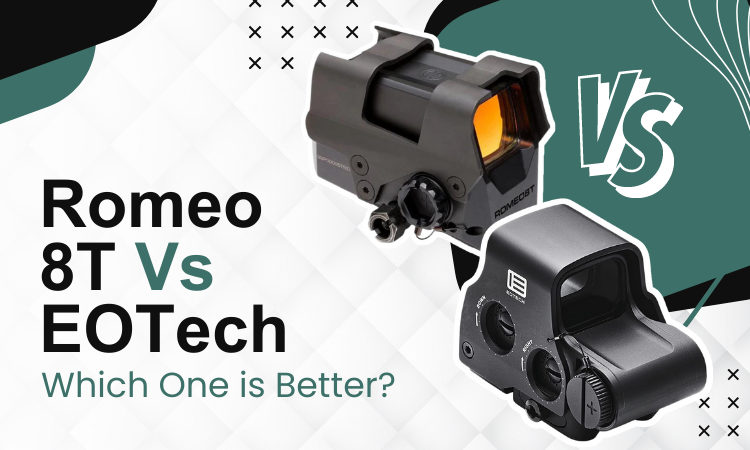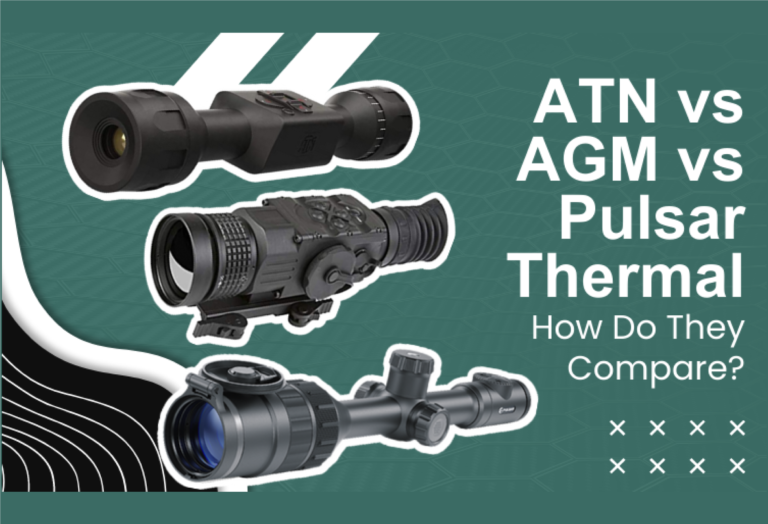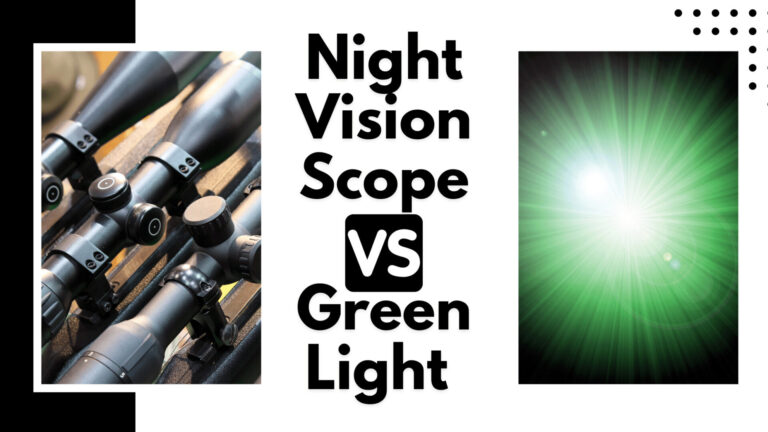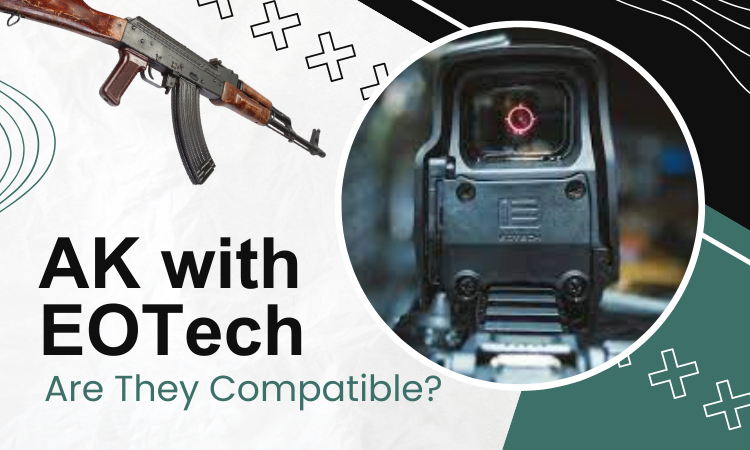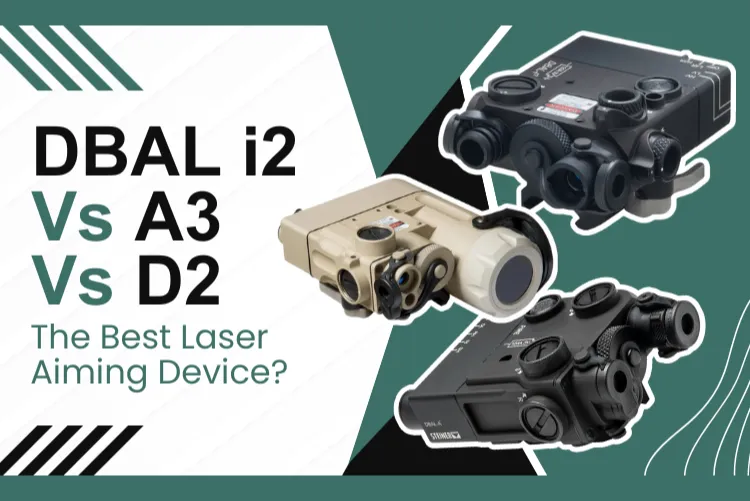Exploring the Differences: Filmed vs Unfilmed Night Vision Technology
People sometimes get confused about whether they should buy filmed night vision devices or unfilmed ones. So it’s necessary to have proper knowledge about it before buying.
So, filmed vs unfilmed night vision, which one should you choose?
When choosing filmed vs unfilmed night vision, people have a different perspective. Filmed night vision devices are easily available and affordable. While unfilmed tubes provide a high-quality image in dark light it is quite expensive. So, people can choose one that goes with their requirements.
There are more concerning aspects on which you can differentiate filmed and unfilmed night vision. To know more, go through the whole article.
Filmed Vs Unfilmed Night Vision: Short Comparison
There are various aspects on which you can differentiate filmed and unfilmed night vision tubes. Here is a comparison table highlighting the differences between filmed and unfilmed night vision:
| Factors | Filmed Tube | Unfilmed Tube |
| Cost | Generally less expensive. | Generally more expensive. |
| Image Quality | Good resolution and detail. | Better resolution and detail. |
| Power Consumption | Less | More |
| Applications | Suitable for various applications, including hunting, surveillance, and outdoor activities. | Ideal for professional applications that require high-quality images, such as military and law enforcement operations. |
| Range | Less | Slightly more |
Overall, the choice between filmed and unfilmed night vision depends on the specific needs and budget of the user. But first, you should have a proper understanding of how night vision actually works. Then you can easily understand which night vision tube is perfect for you.
Filmed vs Unfilmed Night Vision: Detailed Comparison
We generally use tick or thin filmed tubes for night vision as it is easily available and affordable too. On the other hand, for a better experience, high-spec unfilmed tubes are being used. Here, we will have some detailed comparisons between thin/thick filmed night vision and unfilmed night vision. So let’s start with the cost.
Cost:
When it comes to cost, filmed and high-spec unfilmed night vision devices can vary greatly in price. Here is a detailed comparison of the cost between the two types of night vision with a few examples:
- Thin/Thick Filmed Night Vision Cost:
- Pulsar Challenger GS 1×20 Night Vision Monocular: $249.97
- Armasight Vampire 3X Night Vision Rifle Scope: $795
- ATN NVM14-3 Gen 3 Night Vision Monocular: $3,199.00
The cost of maintenance and replacement of the thin or thick film on the output window should also be considered. This can cost several hundred dollars per replacement.
- High Spec Unfilmed Night Vision Cost:
- Pulsar Trail 2 LRF XP50 Thermal Rifle Scope: $5,999.97
- FLIR BNVD-51 Dual Tube Night Vision Goggles: $12,299.00
- Night Optics D-321G Gen 3 Night Vision Binocular: $22,080.00
We can clearly see that most unfilmed night visions cost a lot more than the filmed ones. The cost of maintenance and repair of the advanced electronics should also be considered. This can cost several thousand dollars per repair.
The price of high-spec unfilmed vs. thin/thick filmed night vision equipment can vary significantly. Devices with thin or thick films for night vision are often less expensive; entry-level models start at a few hundred dollars. Unfilmed night vision equipment costs more, with entry-level models starting at a few thousand dollars.
Image Quality:
High-spec unfilmed night vision devices employ a more sophisticated image intensifier tube (IIT) that does not require a film coating. Whereas thin/thick filmed night vision systems use a microchannel plate (MCP) to amplify the available light. Because of this, high-spec unfilmed night vision equipment often offers better image quality than filmed equipment.
High-spec unfilmed night vision equipment, in particular, can offer pictures with higher resolution, less distortion, and better contrast, as well as the capacity to see in total darkness.
However, The resolution of High Spec unfilmed night vision images is much higher. Such as
TNV/PVS-14 L3HARRIS GEN3 Unfilmed White Phosphor MIL-SPEC has a 64lp/mm resolution to provide an extraordinary image quality.
On the other hand, the resolution of a beginner-level Pulsar Challenger GS 1×20 Night Vision Monocular is 36 lp/mm. However, please take notice that additional elements, such as the quality of the lenses and the amount of accessible ambient light, might have an impact on image quality.
Special Features:
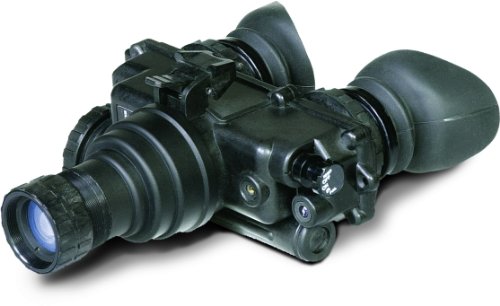
The design of filmed night vision and unfilmed night vision devices differ in several ways:
Thin/thick filmed night vision devices:
- They have a shorter battery life compared to high-spec unfilmed night vision devices
- Are generally more affordable compared to high-spec unfilmed night vision devices
- Are lighter and more compact, making them suitable for handheld or head-mounted use
- The converted electrons strike on a phosphor screen, which emits visible light to create an image.
High-spec unfilmed night vision devices:
- Provide superior image quality compared to thin/thick filmed night vision devices, with less distortion
- Unfilmed night vision has a longer battery life compared to thin/thick filmed night vision devices
- Are generally more expensive compared to thin/thick filmed night vision devices
- Maybe bulkier and heavier, making them more suitable for use with firearms or mounted on vehicles
Power Consumption:
High-spec unfilmed night vision devices tend to consume less power than filmed night vision devices due to their more efficient design.Thin/thick filmed night vision devices typically require higher voltage batteries to operate, such as CR123A batteries, and may have shorter battery life. Considering one example,
Pulsar Challenger GS 1×20 Night Vision Monocular typically runs on one CR123 lithium battery and has a battery life of around 20-50 hours on a single battery.
In contrast, high-spec unfilmed night vision devices typically require lower voltage batteries to operate. Such as AA or AAA batteries. They also have longer battery life. Let’s consider the TNV/PVS-14 L3HARRIS GEN3 Unfilmed White Phosphor MIL-SPEC. This typically runs on one AA battery and has a battery life of around 50-60 hours on a single battery.
Applications:
There are many uses for both filmed and unfilmed night vision equipment in military, law enforcement, and civilian contexts. These are a few examples:
Filmed night vision:
- Outdoor activities: For outdoor adventures like camping, hiking, and animal watching, filmed night vision devices are popular. Moreover, they may be used for nighttime photography and filming.
- Hunting: Thin/thick filmed night vision devices are often used by hunters to track game and navigate in low light conditions. They can also be used to identify and eliminate predators that pose a threat to livestock or wildlife.
High-spec unfilmed night vision:
- Law enforcement: For duties like surveillance, reconnaissance, and SWAT operations, law enforcement forces frequently use high-end unfilmed night vision systems.
- Military: Military forces generally use unfilmed night vision equipment for various operations, including surveillance, target acquisition, navigation, and search and rescue. For navigation, they also use lasers. These lasers can be seen in night vision.
- Search and rescue: High-spec unfilmed night vision equipment can be used in search and rescue attempts to locate missing people or lost hikers in poor light or the dark.
Overall, both thin/thick filmed night vision and high spec unfilmed night vision have a range of applications in military, law enforcement, and civilian settings. These choices may depend on factors such as budget, specific use cases, and personal preference.
Range:
The range of thin or thick filmed night vision and high-spec unfilmed night vision can vary depending on several factors, such as the quality of the device, ambient light conditions, and magnification.
Both thin or thick filmed and high spec unfilmed night vision can have a range of up to 200-600 meters. However, the actual range can vary based on different devices.
Overall, It is easier for the buyer to choose the right one between filmed and unfilmed night vision after going through the detailed comparison.
Filmed Vs Unfilmed Night Vision: Who Wins!
When comparing filmed vs. unfilmed night vision, there isn’t a clear winner because each technology has pros and cons of its own.
Unfilmed night vision devices often offer higher picture quality and sensitivity, especially in extremely low-light circumstances. While filmed night vision devices are typically more affordable and have a good image quality in daylight.
Ultimately, the choice between filmed and unfilmed night vision will depend on your specific needs and budget. If you’re on a tight budget or don’t want the best image quality, a filmed night vision system can be a viable option.
On the other hand, although being more expensive, an unfilmed night vision device may be the preferable option. If only you need the highest level of image quality and sensitivity, especially in extremely low light settings.
Frequently Asked Questions (FAQs):
What does uA mean in night vision?
The capacity of the image tube to detect available light is known as photo-response and is often measured in microamperes per lumen (uA/lm).In terms of night vision performance, it is essential.
What is thin filmed night vision?
Think filmed night vision has a coating, which is a thin film. This enhances the low light condition. This is known as a MIL-SPEC night vision system. They are built for the most demanding nighttime applications.
How long does night vision last?
Thermal night vision cameras, with proper care, can last a lifetime. I² systems have a finite lifespan because of the coatings on the tubes. A good Gen 2+ system should give you as much as 5,000 hours of use
Can filmed night vision be used in daylight?
No, filmed night vision cannot be used in daylight. Filmed night vision devices are designed to be used in low-light or no-light conditions and rely on ambient light, such as moonlight or starlight, to produce an image.
Using a filmed night vision device during daylight hours can damage the image intensifier tube, which is sensitive to bright light. This can result in permanent damage to the tube and render the night vision device unusable.
If you need a night vision device that can be used in both daylight and low-light conditions, you may want to consider a day/night scope, which combines daytime optics with low-light and night vision capabilities.
What is the lifespan of filmed vs. unfilmed night vision tubes?
The lifespan of a filmed or unfilmed night vision tube depends on several factors, including the quality of the tube, how often it is used, and how well it is maintained. Generally speaking, unfilmed night vision tubes have a longer lifespan than filmed tubes.
An unfilmed night vision tube can last anywhere from 10,000 to 20,000 hours, while a filmed tube typically has a lifespan of around 2,000 to 4,000 hours. However, advances in technology and manufacturing processes have resulted in some newer filmed night vision tubes having longer lifespans, sometimes up to 10,000 hours.
It’s important to note that the lifespan of a night vision tube can be affected by factors such as exposure to bright light, extreme temperatures, and physical damage. Proper care and maintenance, such as keeping the device in a protective case and avoiding exposure to bright light, can help extend the life of the night vision tube.
Are there any legal differences between filmed and unfilmed night vision?
In terms of legality, there are generally no significant differences between filmed and unfilmed night vision devices. The regulations around night vision devices are typically based on their capabilities and intended use rather than whether they are filmed or unfilmed.
However, it’s important to note that the use of night vision devices may be restricted or regulated in some jurisdictions, and it’s the responsibility of the user to ensure they are using the device in compliance with local laws and regulations.
Additionally, some countries may have export restrictions on night vision technology, including filmed and unfilmed tubes, so it’s important to research and understand any export regulations that may apply if you are planning to travel with or ship night vision devices internationally.
How can I tell if my night vision is filmed or unfilmed?
If you are unsure whether your night vision device is filmed or unfilmed, you can typically determine this by examining the specifications or documentation provided by the manufacturer or seller of the device. Here are some key differences to look for:
- Filmed night vision devices use a thin film coating over the image intensifier tube to protect it from damage and increase its lifespan. This film can be visible as a greenish tint on the image seen through the device. If your device is advertised as “filmed” or “thin-filmed,” it likely has this protective coating.
- Unfilmed night vision devices do not have this protective coating, so the image seen through the device may appear brighter and clearer than in a filmed device. However, without the protective coating, the image intensifier tube may be more susceptible to damage from bright light sources or other environmental factors.
If you are still unsure whether your night vision device is filmed or unfilmed, you can contact the manufacturer or a qualified technician for more information. They may be able to provide additional guidance or perform an inspection of the device to determine its specifications.
Conclusion
Now you can easily choose the best one between filmed vs unfilmed night vision while buying. In the end, make the appropriate decision according to your needs and budget. Think about all the points that I tried to make.
Good Luck!
